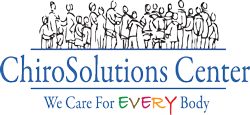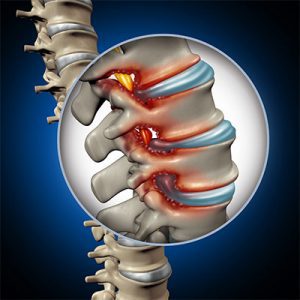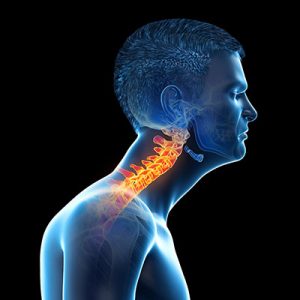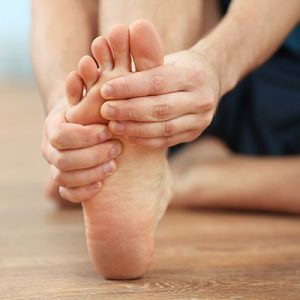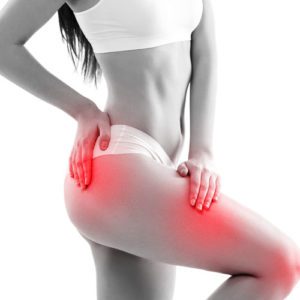Chiropractic Care For Bloating and Digestion

Chiropractic treatment is most often associated with joint and bone realignment, neck and back discomfort, and migraine and chronic headache relief – but did you realize that expert chiropractic care may also help with digestion?
Few individuals schedule their first chiropractic appointment hoping to get rid of their stomach bloating and digestive issues, but perhaps they should: the digestive system, nervous system, and skeletal structure are all intricately linked to each other in both directions.
See More: Chiropractor Virginia Beach
Bones, Joints, and Your Digestion
Almost everyone is living with some form of subluxation (misalignment of small bones) in their spinal cords as a result of regular physical activity, according to estimates ranging from six to nine million people.
Scoliosis affects the spine as a result of injury, trauma, or genetic susceptibility. Scoliosis is defined as an abnormal s-shaped curve that occurs laterally in the spine.
While the spine should naturally have a curvature from front to back, a lateral curvature is unusual and will eventually cause the body’s structure, organs, and function to become out of balance.
Scoliosis, especially when severe, can have a significant influence on the digestive system. The spine curves laterally, putting abnormal strain on the stomach and digestive organs.
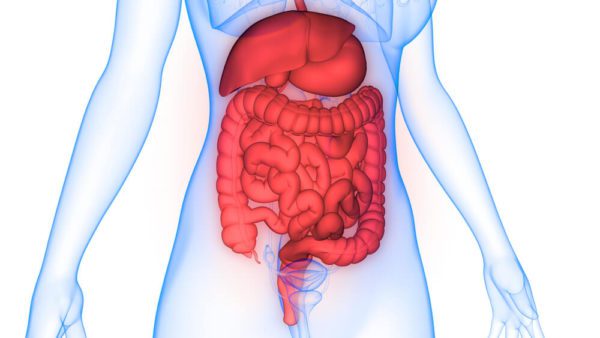
This may limit and interfere with digestion function significantly, resulting in digestive irregularity, constipation, discomfort, bloating, and nausea based on the severity of the curve.
Scoliosis has a long-term course, and the symptoms of this illness may show up gradually. Once the link is missed between bone structure and digestion since digestion is significantly affected by erratic spinal curvature, it might be difficult to establish.
When subluxation takes place in the spine, similar things happen. Subluxation causes spine misalignment and, like scoliosis, forces ligaments, muscles, and tissue to compensate for structural abnormalities.
Furthermore, as with scoliosis, subluxation compresses organs and tissues abnormally, muffling nerve signals and in some cases reducing functionality owing to a lack of nerve-system regulation of digestive processes.
Your Nervous System and Digestion
The digestive process is largely controlled by the nervous system. The state of the bones also has an impact on how the nervous system works. When the vertebrae are misaligned, it puts a strain on the nervous system.
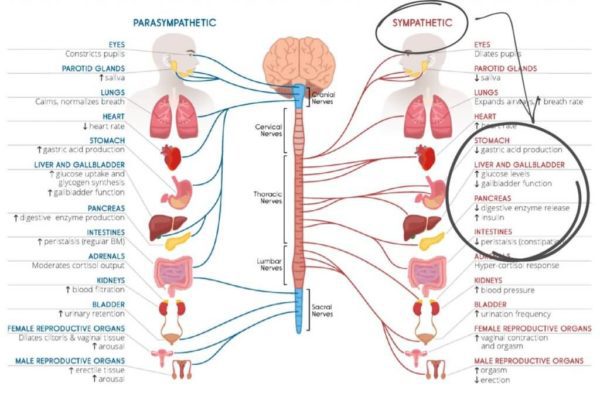
When bones and joints slip out of place in the body over time or as a result of an accident or trauma, this interrupts communication between the central nervous system, which includes the brain and spine, and the peripheral nerve network that includes all of the nerves outside of the brain and spine.
The Enteric Nervous System
The enteric nervous system, often known as the “second brain,” is a tiny-known “second brain” of the body that resides in the gastrointestinal system. The enteric nervous system controls digestion, nutrient absorption, chemical secretion, and overall digestive function.
One example of how the enteric nervous system affects sensations and digestion function is when an individual isn’t in homeostasis, when this happens, one of the first areas of the body to react to stress is the enteric nervous system.
The vagus nerve transmits information to the enteric nervous system from the central and peripheral nervous systems via the phrenic nerve.
The phrenic nerve controls not just digestion, but also heart rate and breathing rates, as well as reflex actions and vasomotor activity, which affects blood vessel diameter.
Many of the functions of various systems are linked to the vagus nerve, which serves as a connecting link between the central and peripheral nervous systems.
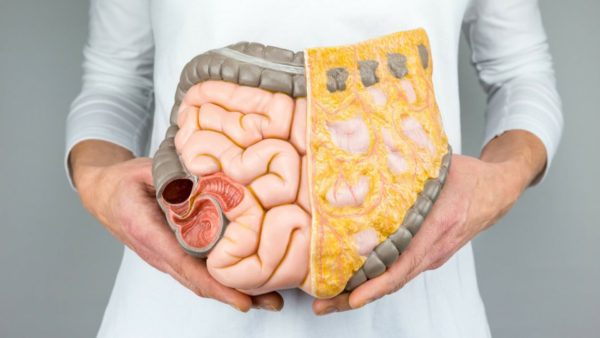
The enteric nervous system’s network of nerves is disrupted by spine misalignment and subluxation. When the spine is misaligned, out-of-place joints and bones begin to restrict, as well as strain local muscles and tissues that attempt to compensate for the structural imbalance and help return the body to homeostasis.
When nerves are squeezed, electric signals that travel along nerve pathways to connect with the digestive system (and other bodily functions) are blocked, resulting in a lack of communication.
In time, misalignment might reduce electrical activity significantly across the entire body, not just in the digestive system. This can cause difficulties in the circulatory and respiratory systems (irregular heartbeat and restricted breathing), to name a few. One system affects all of them in the human body.
Chiropractic Care and Your Digestion
There are four primary chiropractic techniques for treating bloating, indigestion, and overall digestive system strain. Each of these procedures restores proper nerve function and communication between the nervous system and the digestive system.
Getting Adjustments
Chiropractic adjustments are the most frequent type of chiropractic treatment for digestive problems. Adjustments provide short-term relief to subluxated areas of the spine and strained muscles, ligaments, and tissue in other places.
The impact that spinal adjustments have on the nervous system in the regions surrounding the spine (and limbs, where applicable) is one of their major therapeutic functions.
An adjustment by a professional chiropractor not only puts a joint or bone back to its proper alignment, but it also relieves the pressure that the misalignment was creating on the local area. This is particularly beneficial to the nervous system and regaining nerve communication in the body, which is largely due to electrical and chemical impulses traveling across the nervous system.
When a spinal and joint injury is treated by a qualified chiropractor, nerve impulses and messages are able to travel at their optimal speed and effectiveness. This implies that bodily functions such as digestion can resume once again.
In those areas, electrical and chemical energy potential has been restored, encouraging ideal and efficient function.
The body can heal damaged nerve connections and communication, as a result of regular adjustments. This might lead to improved digestion and the alleviation of digestive problems including bloating, constipation, diarrhea, irregularity, nausea, and general discomfort.
Getting Spinal Traction
Another chiropractic treatment that has enormous life-changing effects on digestion is spinal traction.
The connection between digestion and spinal alignment may appear indirect at first, but the role that the spine plays in nervous system function when it comes to digestive health is very direct.
Adjustments and spinal traction are similar in that they relieve pressure from compressed and restricted nerves and reinvigorate electrical, chemical, and energy flow throughout the body.
Unlike adjustments, however, spinal traction does not have the same “flushing” or detoxifying effect as it may not stimulate an initial detoxification or “flushing” response in all patients. It is intended for more long-term effects than adjustments.
Spinal traction is a type of slow movement of bones and joints over time for long-term relief from misalignment.
Spinal traction is used to treat subluxation and displacement (for example, scoliosis) with the aim of preventing the spine from reverting to an incorrect posture over time.
Tension can alleviate pressure caused by misalignment by correcting the misalignment gradually over time, similar to adjustments.
Practicing Corrective Exercises
Your chiropractor may want to provide a series of corrective exercises that you must do at home and add to the treatments he or she provides at the clinic.
Corrective exercises can be done with equipment, or simply with items from your own home and surroundings.
Rehabilitation of misaligned, hurt, and weak areas of the body is the purpose of correctives exercises.
You are more likely to experience maximal alleviation if you follow your chiropractor’s instructions for doing corrective exercises on a regular basis.
Corrective exercises will complement and extend the benefits of your chiropractic therapy. If you are given a set of corrective exercises to perform at home by your Chiropractor in Virginia Beach, perform them as often and consistently as possible.
Receiving Deep Tissue Work
Muscles can also become trained (or “remember”) their suboptimal position even after bones and joints have been relocated back to the correct alignment.
When the structural alignment of the body is incorrect, the body generally adapts to find alternative methods of support.
In most situations, muscles throughout the body, especially those in the back, neck, and shoulders, learn to compensate for structural misalignment by becoming cramped, strained, frayed, or kinked in order to return to natural equilibrium.
Although muscles may push the bones and joints back into their misaligned position following an adjustment or spinal traction, they can do so not long after a chiropractic treatment.
Deep tissue massage, which involves manually manipulating muscles and tissues, might help with this.
This therapy can aid in the release of tight muscles and resetting the muscle’s “memory,” allowing it to retain the new and improved structural alignment for as long as possible.
If you’re ready to get your digestion back in order, reduce bloating, and re-ignite your optimal nerve function, make an appointment today.

Similar Posts
Free Initial Consultation
Stop living with pain and discomfort. Contact us to schedule your free initial appointment.
Request an appointment online, or call 757-271-0001

